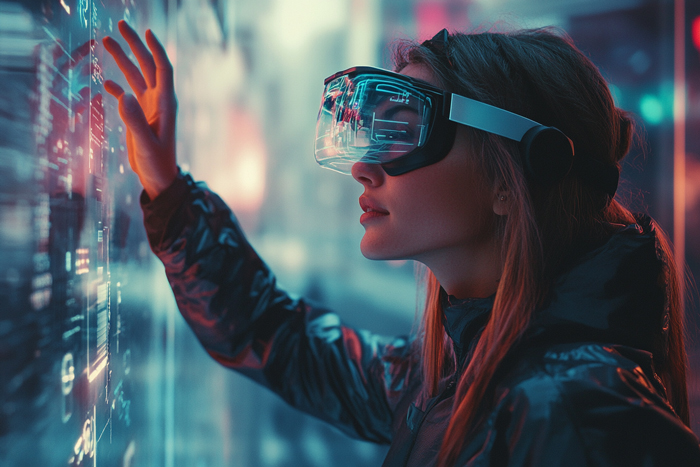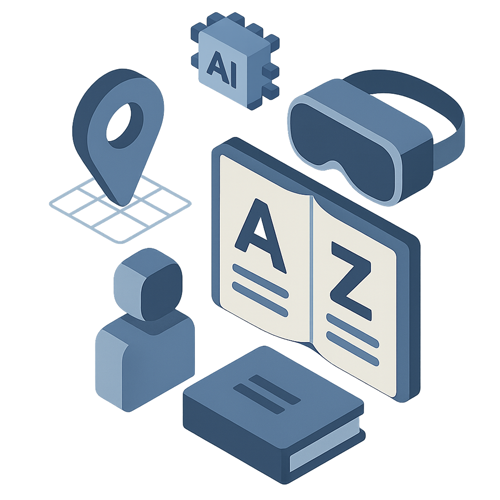Virtual Reality (VR) technology is increasingly finding its way into classrooms, offering immersive and interactive learning experiences that could revolutionize traditional education methods. This article explores how effective VR is in enhancing student engagement, the challenges schools face in adopting it, and its potential role in shaping the future of education.
Introduction
Education is continually evolving, shaped by technological advances that offer new ways for students to engage and learn. One of the most exciting recent developments is the integration of Virtual Reality (VR) into classroom settings. By creating immersive environments that simulate real-world experiences, VR has the potential to transform abstract concepts into tangible experiences and make learning more engaging.
As educators and institutions explore VR’s potential, many students also look for additional support to navigate complex coursework in emerging tech fields. Platforms providing a Computer Science Assignment Writing Service have emerged as vital resources, assisting learners with technical writing and coding projects linked to these new learning modalities.
How Virtual Reality Enhances Classroom Engagement
One of the main appeals of VR in education is its ability to boost student engagement. Traditional classroom instruction often relies heavily on lectures and textbooks, which can sometimes fail to capture students‘ attention, especially when dealing with complex or abstract subjects. VR, on the other hand, offers an immersive, multisensory experience that actively involves students.
Immersive Learning Experiences
VR enables students to explore environments and scenarios that would otherwise be inaccessible due to cost, safety, or logistical constraints. For example, students can take virtual field trips to historical sites, explore the human anatomy in 3D, or simulate scientific experiments in a risk-free setting. This hands-on approach makes learning more meaningful and helps students retain information better.
Increased Motivation and Curiosity
Studies show that students exposed to VR-based lessons often report increased motivation and curiosity. The novelty of using cutting-edge technology can encourage learners to invest more effort in their studies. It also promotes experiential learning, which is linked to deeper understanding and skill acquisition.
Can VR Replace Traditional Learning Tools?
While VR has clear benefits, a common question is whether it can fully replace traditional educational tools like textbooks, whiteboards, and lectures. The answer is nuanced.
Complementary Rather Than Replacement
Currently, VR is best seen as a complementary tool rather than a wholesale replacement. It works well when integrated with traditional teaching methods to reinforce concepts through experience and visualization. For example, a biology teacher might combine a textbook lesson on cell structure with a VR tour inside a cell.
Accessibility and Equity Concerns
Traditional tools remain essential because VR’s accessibility is still limited. Many schools lack the budget or infrastructure to implement VR at scale. Additionally, students with disabilities or those prone to motion sickness may find VR challenging. Thus, VR cannot yet be the sole mode of instruction.
Challenges of Implementing VR in Schools
Despite its promise, several obstacles impede widespread VR adoption in education.
Cost and Infrastructure
The initial investment in VR hardware and software is significant. Schools need VR headsets, compatible computers or consoles, and reliable internet connections. Many educational institutions, especially in underfunded districts, struggle to afford these resources.
Teacher Training and Curriculum Development
Effective VR use requires educators to be trained not only in the technology itself but also in how to design and deliver VR-based lessons aligned with curriculum standards. This professional development is often time-consuming and costly.
Technical Issues and Maintenance
Like any technology, VR systems require ongoing technical support, software updates, and maintenance. Schools need dedicated IT personnel to manage these aspects, which can strain resources.
Content Availability and Quality
High-quality educational VR content is still emerging. Many available programs lack alignment with educational standards or pedagogical rigor, limiting their effectiveness.
How VR Shapes the Future of Educational Experiences
Despite these challenges, VR is poised to play a major role in the future of education.
Personalized and Adaptive Learning
VR environments can be tailored to individual learning paces and styles. For example, virtual tutors can guide students step-by-step, offering hints or additional explanations as needed. This adaptability could help bridge achievement gaps.
Collaboration in Virtual Spaces
VR can connect students from different locations in shared virtual classrooms or labs. This expands opportunities for collaboration, peer learning, and exposure to diverse perspectives without geographic constraints.
Preparing Students for Future Careers
As VR technology becomes integral to industries like healthcare, engineering, and design, familiarity with VR tools will be valuable career preparation. Integrating VR into education helps students gain early exposure to these technologies.
The Role of Academic Support Services in VR-Enhanced Learning
With VR’s increasing complexity, many students require additional academic support to keep pace, particularly in technical fields like computer science. Here, assignment help services become crucial. Whether students struggle with programming assignments related to VR development or need help understanding VR concepts, academic support can enhance learning outcomes.
Furthermore, specialized services offering Computer Science Assignment Writing Service provide tailored assistance for coding projects, algorithm design, and documentation—helping students master the skills necessary for VR applications.
Student Success Stories: VR in Action
Several schools worldwide have reported positive outcomes from VR integration.
A high school in California introduced VR modules for environmental science, enabling students to virtually visit ecosystems around the globe. Students reported higher engagement and improved test scores.
A university medical program uses VR to simulate surgeries, providing hands-on experience without risks. Students who trained with VR demonstrated better procedural knowledge and confidence.
An international collaboration between schools uses VR to host joint language learning sessions, enhancing cultural exchange and conversational practice.
Conclusion: Is VR the Next Big Thing in Education?
Virtual Reality is more than a passing fad; it represents a significant shift in educational paradigms. While it won’t replace traditional methods entirely, VR’s immersive and interactive capabilities offer powerful tools for engagement and deeper learning.
Addressing challenges related to cost, training, and content quality is essential to realize VR’s full potential in classrooms worldwide. As this technology matures, complementary academic support—such as Computer Science Assignment Writing Service and assignment help—will be vital to helping students and educators alike navigate this exciting frontier.
Ultimately, VR’s future in education is promising, provided schools and policymakers invest thoughtfully and inclusively.
Quelle:
https://vocal.media/education/virtual-reality-in-classrooms-enhancing-engagement-or-a-passing-fad





